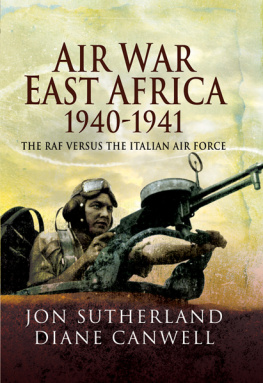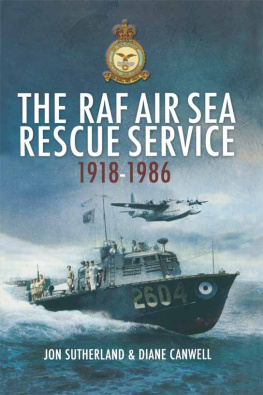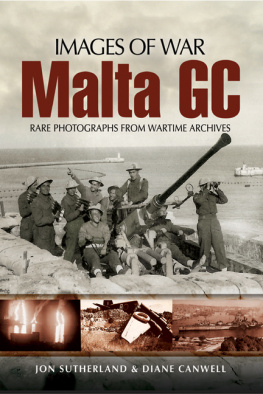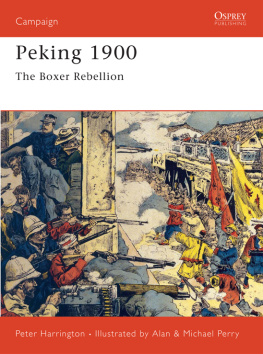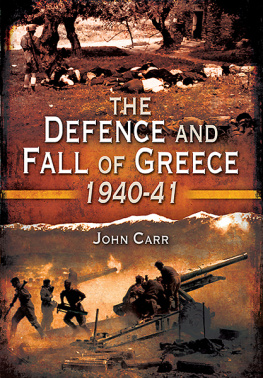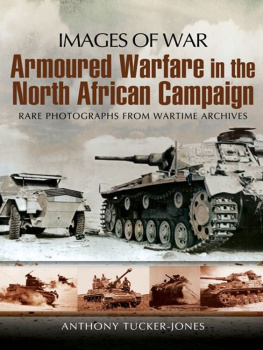
First published in Great Britain in 2009 by
Pen & Sword Aviation
an imprint of
Pen & Sword Books Ltd
47 Church Street
Barnsley
South Yorkshire S70 2AS
Copyright Jon Sutherland and Diane Canwell, 2009
ISBN 978 1 84415 816 4
Print ISBN: 978-1-84415-816-4
ePub ISBN: 9781844688043
The right of Jon Sutherland and Diane Canwell to be identified
as authors of this work has been asserted by them in accordance
with the Copyright, Designs and Patents Act 1988
A CIP catalogue record for this book is
available from the British Library
All rights reserved. No part of this book may be reproduced or transmitted
in any form or by any means, electronic or mechanical including
photocopying, recording or by any information storage and retrieval
system, without permission from the Publisher in writing.
Typeset in Ehrhardt
by S L Menzies-Earl
Printed in the UK by the MPG Books Group
Pen & Sword Books Ltd incorporates the imprints of
Pen & Sword Aviation, Pen & Sword Maritime, Pen & Sword Military,
Wharncliffe Local History, Pen & Sword Select,
Pen & Sword Military Classics and Leo Cooper.
For a complete list of Pen & Sword titles please contact
PEN & SWORD BOOKS LIMITED
47 Church Street, Barnsley, South Yorkshire, S70 2AS, England
E-mail:
Website: www.pen-and-sword.co.uk
It was to be an impossible campaign, a crazy campaign, one fought by handfuls of British and Commonwealth troops in an arena of 700,000 square miles and defended by over a quarter of a million enemy troops.
Quite rightly, the focus of the Second World War in Africa has been on the events in the Western Desert. Yet the odds facing the British and Commonwealth troops in East Africa were even longer than in North Africa. To oppose the Italians and their colonial troops were just 10,000 men, spread out across Kenya, the Sudan and Somaliland. Within a year of the Italians declaring war in July 1940, five British and Commonwealth divisions, supported by local units and a mixed bag of obsolete aircraft, were driving the Italians out of the region on four different fronts.
The architect of the victory was Field Marshal Sir Archibald Wavell, yet the builders of the victory were the British soldiers, Indians, South Africans, Sudanese, Kenyans, West Africans, Australians and Abyssinians.
It was a dark time for the nations opposing the Germans and Italians in Europe, for continental Western Europe had fallen, and the sudden collapse of France in May 1940 had made Mussolini, the Italian Dictator, bold. He threw his not inconsiderable strength behind offensive operations in North Africa. But there still remained the vast army led by the Duke of Aosta in Italian East Africa. The Duke fully appreciated the unpreparedness of his troops to defend the vast territories so recently won. He determined to deliver a knockout blow against the British before reinforcements could be sent to the region. His offensive plans were at first rejected by the Italian Chief of Staff, Badoglio. Badoglio was adamant that the Duke of Aostas army should adopt only a defensive stance.
The Italians could strike at Port Sudan in the Sudan, against Mombasa, Kenya, in the south, or against British or French Somaliland in the east. The Italians became firmly of the opinion that Britain was on the verge of collapse and that a German invasion of the British Isles was imminent. At that point they gave the Duke of Aosta free rein to mount an offensive. The Italians would aim to seize British Somaliland, the easiest of the three options.
Strategically, Italian East Africa, encompassing Abyssinia, Eritrea and Italian Somaliland, bounded Kenya, Anglo-Egyptian Sudan and British and French Somaliland. Given the fact that the Italians were firmly in control of Libya, the possible link-up between these two vast Italian-held territories would have had severe repercussions for Britains war effort. Italian East Africa threatened Red Sea shipping and Aden, vital gateways for transporting material and troops from the British Empire and supplies from the United States. Yet the campaigns in the early months of the war, after Italian involvement, were 2,000 miles away from the Italian East African theatre.
It was no mean feat for Wavell, responsible for maintaining operations and defence on both fronts. He would have to carefully husband his military resources. From Cairo he would mount his operations against Cyrenaica in Italian Libya. From Khartoum he would need to protect the Sudan from Eritrea and the northern border of Abyssinia. From Nairobi in Kenya he would have to protect both Kenya and Uganda from Italian Somaliland and the southern border of Abyssinia.
Italian East Africa had only been conquered in the late 1930s. It was still a volatile region, and any hint of weakness on the part of the Italian army would swell rebel forces and threaten the civilian population. As a consequence, the Italians and their colonial forces could muster at least 300,000 men, supported by at least 400 artillery pieces and in excess of 200 aircraft. Eritrean airfields lay within striking distance of key British targets. Upwards of 100,000 Italian troops were available along the Sudan border. Facing them were just three British battalions. The entire Sudan Defence Force mustered some 4,500 men, protecting a frontier of 1,200 miles. In all, to support the 7,000 Allied troops, there were just seven obsolete aircraft: all this to defend an area as large as Germany.
Outnumbered at least ten to one, the defenders of the Sudan would be sorely pressed by July 1940. To the east the Italians would launch a powerful, full-scale invasion of British Somaliland on 4 August. The capital, Berbera, would fall, with the last Allied troops evacuating at 1300 on 16 August. Seven months later, to a day, the British would return.
The capture of British Somaliland would effectively be Italys only victory. On paper, the Duke of Aosta had sufficient troops to not only overrun British Somaliland, but to take the whole of the Sudan. Churchill certainly appreciated the importance of the Sudan, and realised that its capture would mean that Egypt was severely threatened. As a result he began to reinforce from August 1940. As the Italians would discover, at Agordat, Keren, Massawa and Amba Alagi, the same outnumbered men would defeat them time after time. Admittedly Italian tactics showed little imagination. Time after time Allied nerve brought spectacular victories. The Italians did fight well, but always on the defensive. Their morale was brought down not only by the Allied advances from February 1941 in Eritrea and Somaliland, but also by the dreadful news of massive defeats in the Western Desert and in Greece. The defence of Keren in Eritrea was conducted with great verve. But when it fell it was a shattering blow for the Italians, and they never really recovered. By March 1941 the Italians were fighting a series of rearguard actions. Their great victories had all gone so terribly wrong. The illusion that Italy was a first-class military power was shattered.
Throughout the conflict, limited numbers of Allied troops were supported by impossibly small numbers of aircraft, yet despite being outnumbered, ground and air fought as a team throughout something that would be replicated when Montgomery went on the offensive in the Western Desert.
Undoubtedly the campaigns in Italian East Africa were some of the strangest and most improvised, and truly fought on a shoestring. Although the Duke of Aosta would formally surrender in May 1941, upwards of 7,000 Italian troops would remain at large, some even continuing to fight beyond the date when Italy abruptly changed sides and joined the Allies in 1943.
Next page
